Last month we published a report on Oral Reading Fluency (ORF) using data we collected using our Reading Assessment Programme (RAP).
Following this, we were interested to see how fluency mapped onto the work we did on early literacy and the segmentation of Key Stage 1 (KS1) literacy scores by gender, season of birth, and disadvantage[1].
This is a part of the long term work of the Fischer Family Foundation to explore how reading intervention at Key Stage 1 may change educational trajectories, especially for disadvantaged pupils. This is particularly relevant now, given that we now no longer have statutory KS1 assessment.
We used RAP data to look at the pupils with scores in the lowest quartile for Oral Reading Fluency at the end of KS1 (all the scores taken from May to July in Year 2, about the time that pupils would have done KS1 SATs). There were 3,500 such pupils who have an Oral Reading Fluency of below 45 words counted per minute (WCPM) by the end of KS1.
We then segmented the group by gender, disadvantage and term of birth as we have done previously.
In general, proportionately more boys than girls have a low level of ORF. For both boys and girls, disadvantaged pupils and those born in Summer are more likely to have a low level of ORF. Whereas 15% of Autumn born girls who were not disadvantaged had a low level of ORF, this figure was over three times higher (48%) for Summer born disadvantaged boys.
We can see that the numbers look extremely similar to the picture we previously developed of low literacy scores in KS1 assessments.
If anything, differences between the groups are even starker. One in every two (54%) Summer born disadvantaged boys had a low level of KS1 literacy. Among non-disadvantaged pupils, Summer born boys were more than twice as likely as Autumn born girls to have a low level of literacy.
But although disadvantaged pupils are over-represented among the lower attainers, it is worth bearing in mind that disadvantaged pupils only form roughly a third of the total national cohort and the majority of lower attainers are not disadvantaged.
To illustrate this, we show the number of lower attainers in the 2023 end of Key Stage 1 cohort.
These broad patterns persist until the end of Key Stage 4. Although term of birth differences are much reduced, the disadvantage gap becomes even more stark.
18% of Autumn born girls compared to 61% of Summer born disadvantaged boys did not achieve at least grade 4 in GCSE English language in 2023.
Reducing the number of pupils with low levels of early literacy is the goal of the Fischer Family Foundation Apex Project. This is a systematic programme of reading catch-up in Year 1 and 2 that aims to get most pupils back ‘on track’ in reading by the start of Year 3, which in turn, could have a major influence on future educational trajectories, especially for disadvantaged pupils
- Eligible for free school meals

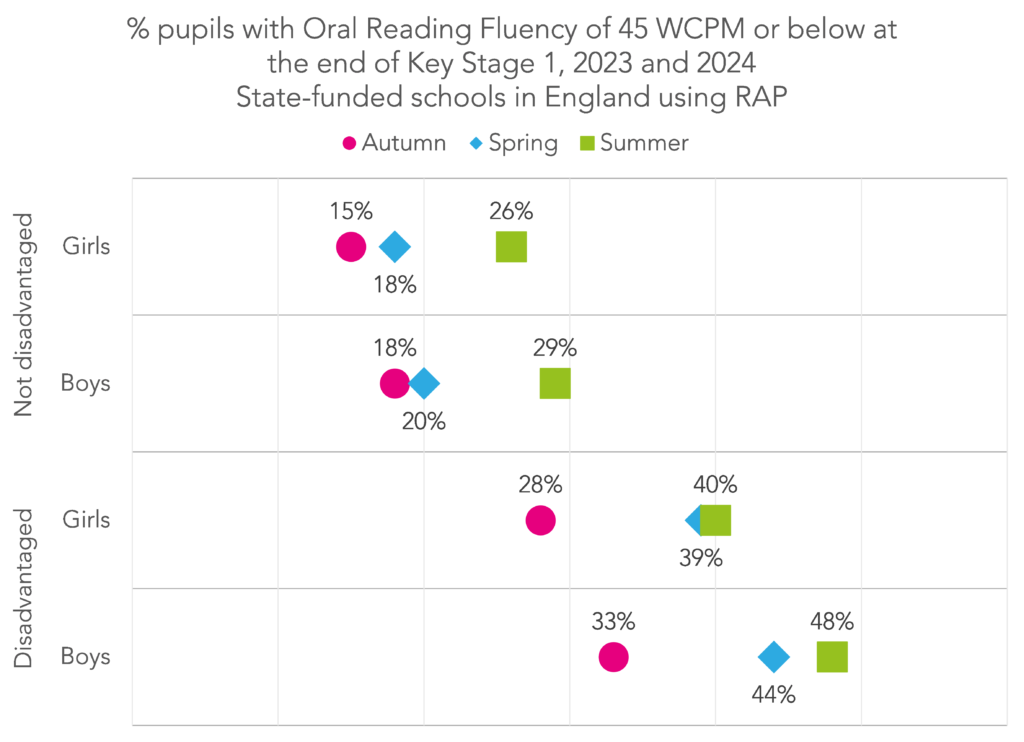
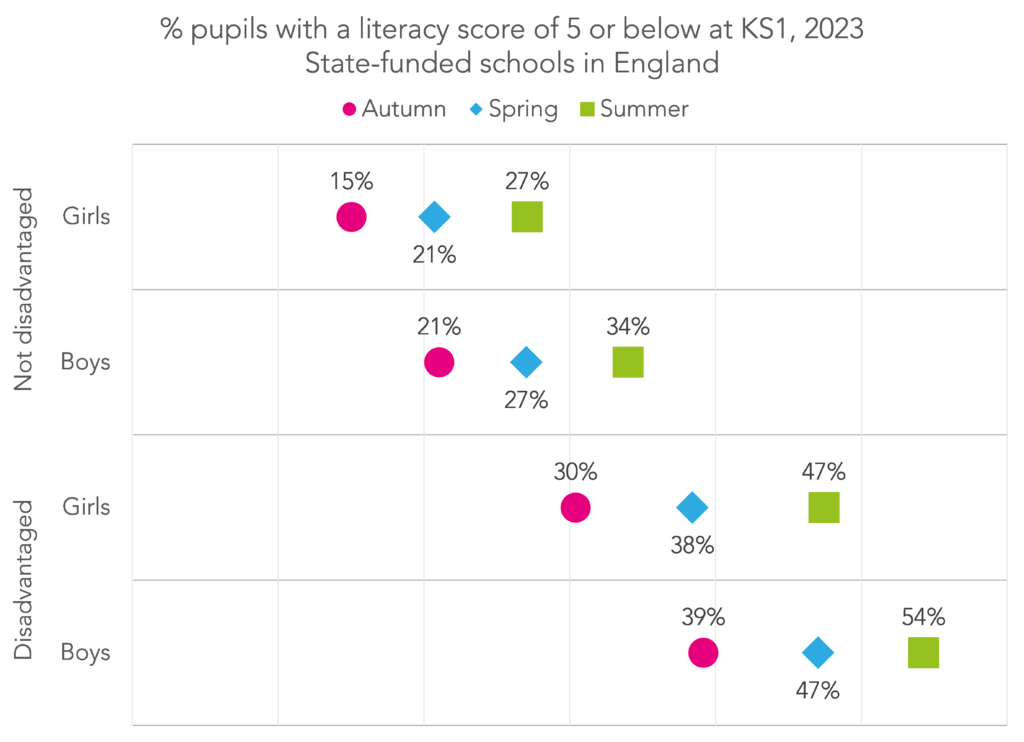
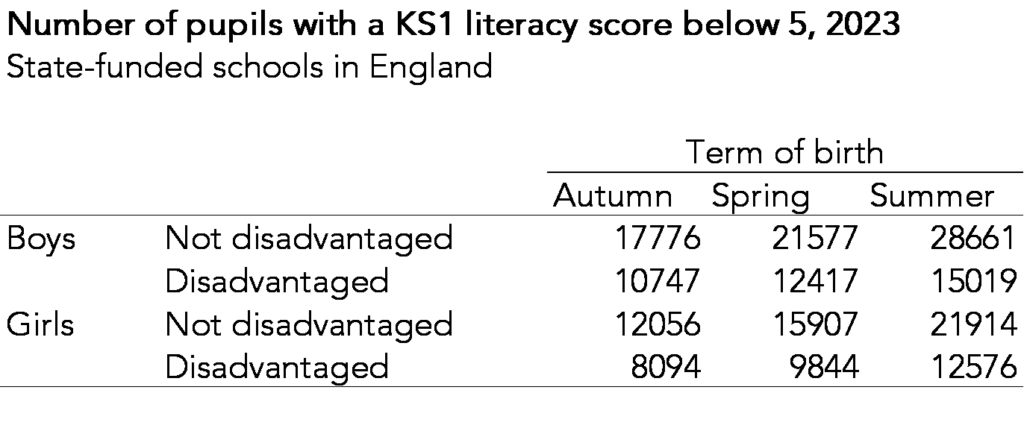
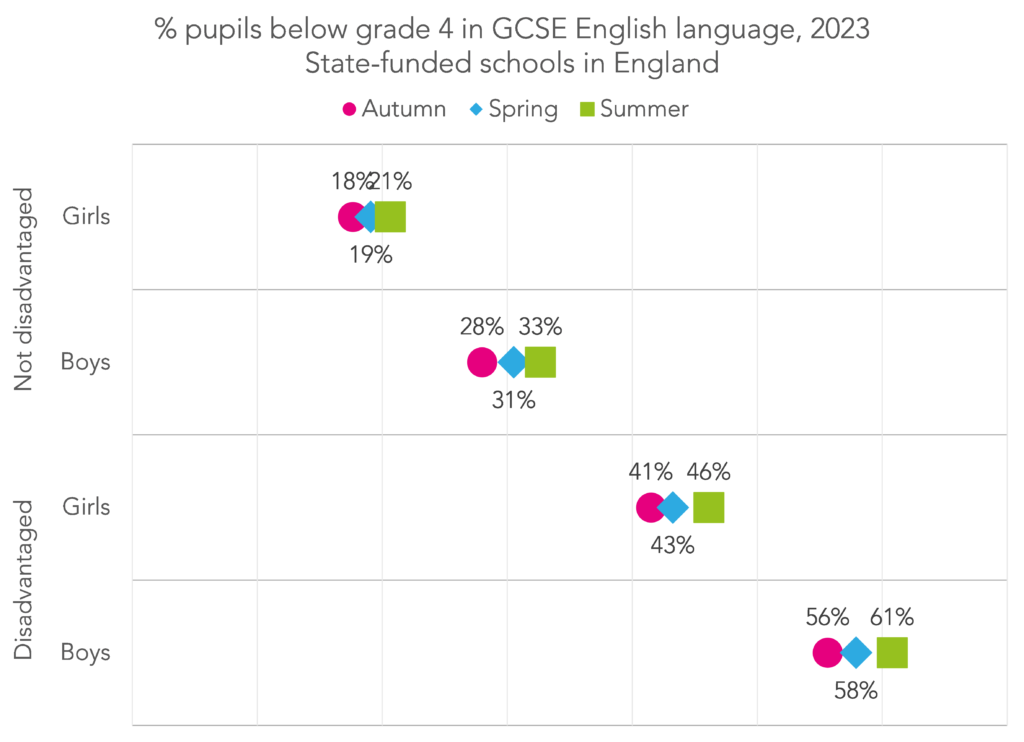
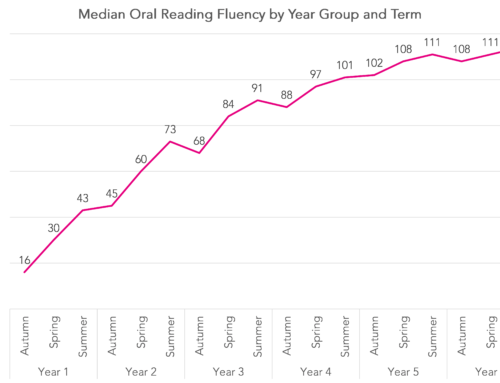
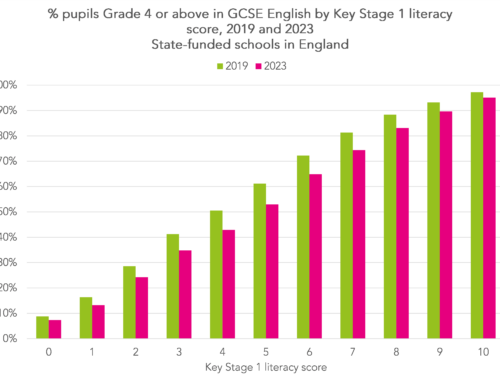

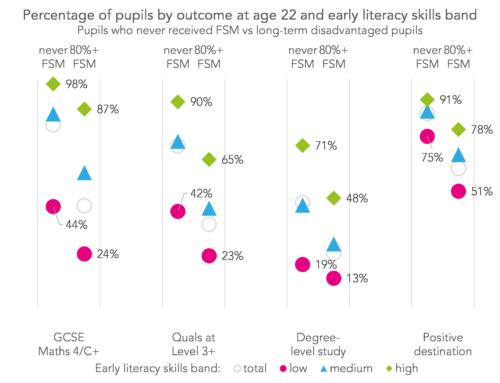
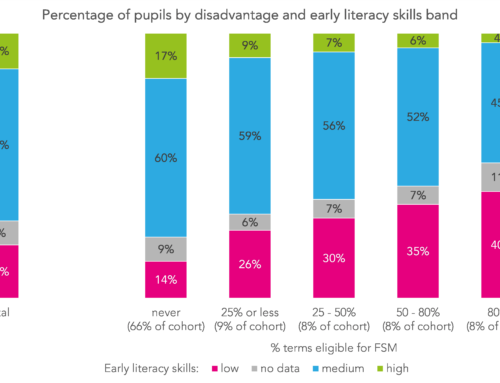
Leave A Comment